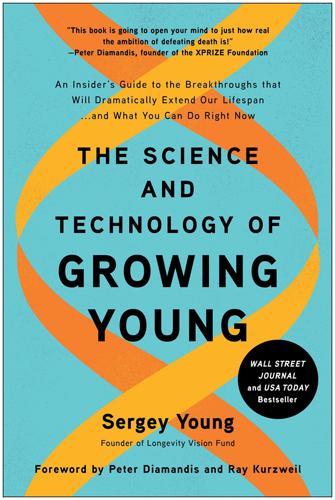
The Science and Technology of Growing Young: An Insider's Guide to the Breakthroughs That Will Dramatically Extend Our Lifespan . . . And What You Can Do Right Now
by
Sergey Young
Published 23 Aug 2021
We glanced at the benefits of caloric restriction (CR) in chapter nine. CR-mimicking attributes of longevity pill candidates are at the source of those pills’ benefits. Awareness of the relationship between caloric restriction (CR) and longevity goes back to the 1930s, when Cornell animal husbandry professor Clive McCay discovered that rats who were underfed by 30 to 50 percent not only became healthier than their normally fed littermates but they also lived 33 percent longer. These experiments have been successfully repeated in one form or another in worms, mice, rats, rhesus monkeys, and humans. Caloric restriction predictably reduces common health problems like diabetes, cancer, heart disease, and cognitive decline.
…
This is called autophagy, from the Latin for “self ” and “eat.” And while there is a good deal of disagreement in the field of longevity science, what virtually all the experts agree on is that caloric restriction helps preserve or even restore youth and good health. Experiments in creatures from fruit flies to humans have definitively shown that restricting calories mitigates many of the hallmarks of aging, resulting in longer, healthier lifespans. According to psychiatrist Dr. Daniel Amen, caloric restriction even improves your brain health: “Restricting calories puts the body in a good stress response, where it’s decreasing beta-amyloid retention in the brain and setting off a number of anti-aging mechanisms.”
…
Whether or not our natural lifespan is limited to that 115- to 120-year window, however, may not matter much, as we audaciously develop technology that will allow us to carry on living without the express written approval of Mother Nature. As we shall see, gerontologists are developing an arsenal of technologies—from caloric restriction to organ replacement—that are already producing impressive results. We will meet some of the most exciting of these breakthroughs in the following chapters. As you will see, life extension is an exciting and promising dimension of longevity. But some gerontologists are looking even further ahead, asking, What if the best way to live longer isn’t to prevent early death or extend maximum lifespan but to simply age in reverse?
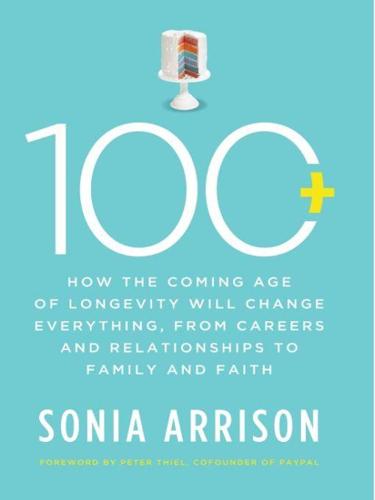
100 Plus: How the Coming Age of Longevity Will Change Everything, From Careers and Relationships to Family And
by
Sonia Arrison
Published 22 Aug 2011
Today, there are tons of books on the market that purport to have the answer to eating for a long life, such as The Longevity Diet, The Okinawa Diet Plan, The Blue Zones, Beyond the 120 Year Diet, The Advanced Mediterranean Diet, and The CR Way. Although most diets cannot prove they actually help to fight aging, there is some evidence to suggest that caloric restriction can have an impact on life expectancy, the science of which we will explore in the next chapter. For now, it will suffice to say that caloric restriction is exactly what it sounds like—eating a lot less food. Even though restricting diet is a difficult proposition for many, perhaps a worse fate was suffered by those who agreed to receive grafts of chimpanzee testicles.
…
“After watching elderly mice on resveratrol perform like rodent Olympians in an endurance test, I came away convinced that the long, weird quest to extend life span . . . was finally getting somewhere.”70 Resveratrol affects a set of enzymes called sirtuins, which are known to be involved in the proven life-span-extension method called caloric restriction (CR). CR is exactly what it sounds like: eating about 30 percent fewer calories than normal but without malnutrition. It is well documented that CR causes an extension in both health and life span in rodents, delaying the onset of age-related diseases such as cancer, heart disease, and Alzheimer’s. The evidence shows that even in monkeys CR is powerful. In 2009 results from a twenty-year-long study on caloric restriction in rhesus monkeys demonstrated the health effects.71 The monkeys on the low-calorie diet not only were in better health and suffered fewer deaths than the control group but also looked a lot better.
…
One of the most radical means to achieve greater longevity is caloric restriction, or limiting calories while increasing nutrients. As we learned in Chapter 2, this type of diet has been shown to cause changes that significantly slow down aging. In discussing the topic, Dr. Oz told Oprah’s audience that it is possible to talk about “very specifically allowing us to go into our second century of life with the vitality and the bounciness that you have when you’re a young person.”5 In fact, he said that Joe Cordell, a man who practices caloric restriction and who Dr. Oz interviewed in the audience that day, “may become the first man in history to live to be 150 years old.”6 That is an exciting message, and Dr.
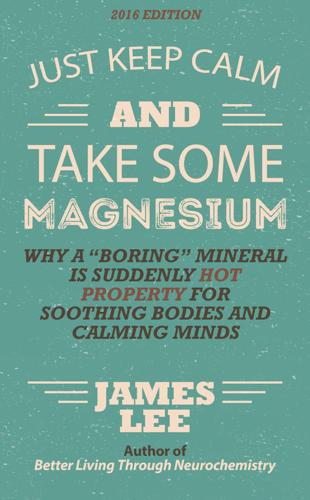
Just Keep Calm & Take Some Magnesium - Why a "Boring" Mineral Is Suddenly Hot Property for Soothing Bodies and Calming Minds
by
James Lee
Published 10 Feb 2014
Not surprisingly, scientists have found that modulating the process of autophagy appears to trigger an anti-aging effect. The most promising example of this is in the area of caloric restriction for life extension. As of today, caloric restriction is arguably the single most potent and measurable life-extending technique we have at our disposal. A few years ago scientists noticed that you could dramatically increase the life span of various animals and organisms by restricting calorie consumption by a large proportion. This has also been validated in humans, where caloric restriction leads to improvements in a range of biomarkers for the aging process. As you could imagine, this is a tough sell for the general public.
…
Of particular interest is the role that TFEB plays in Huntington’ disease – possibly the most severe of all genetically-modulated neurodegenerative disorders. Scientists are now studying ways to possibly increase expression of TFEB and reduce the neurotoxicity associated with Huntington’s. Again, it appears as if caloric restriction increases expression of TFEB – perhaps pointing to another mechanism driving the anti-aging effect of restricting calories. Telomere shortening As mentioned earlier, telomeres sit at the end of chromosomes, gradually shortening after successive replications. Telomeres are often referred to using the rather accurate analogy of the piece of plastic that sits at the end of your shoelaces.
…
This theory proposes that the number one priority for an organism is to reach reproductive age and this rush to maturity means that other processes such as repair work can be sacrificed. Slowly over time, these small sacrifices accumulate as the aging process. On the surface this may seem like a plausible theory however there is one major deal-breaker in my opinion – caloric restriction. One of the least disputed ideas in the field of aging is that restricting calories extends the life of an organism. So, under the disposable soma theory, restricting calories should lead to accelerated aging, not decreased aging. Inflammation and advanced glycation end-products (AGEs) Inflammation is one of the buzz words in medicine today – and for good reason.
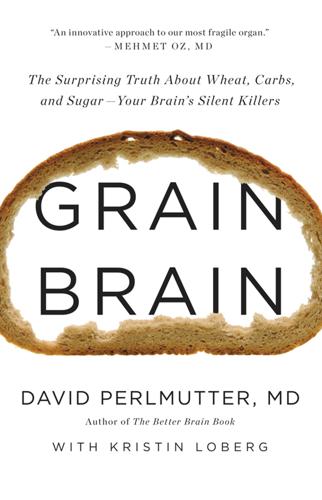
Grain Brain: The Surprising Truth About Wheat, Carbs, and Sugar--Your Brain's Silent Killers
by
David Perlmutter
and
Kristin Loberg
Published 17 Sep 2013
Mitochondria have their own DNA, and we know now that they play a key role in degenerative diseases such as Alzheimer’s and cancer. Caloric restriction also has a dramatic effect on reducing apoptosis, the process by which cells undergo self-destruction. Apoptosis happens when genetic mechanisms within cells are turned on that culminate in the death of that cell. While it may seem puzzling at first as to why this should be looked upon as a positive event, apoptosis is a critical cellular function for life as we know it. Pre-programmed cell death is a normal and vital part of all living tissues, but a balance must be struck between effective and destructive apoptosis. In addition, caloric restriction triggers a decrease in inflammatory factors and an increase in neuroprotective factors, specifically BDNF.
…
It’s also been shown that the opposite occurs: BDNF production is decreased in animals on a diet high in sugar.16 One of the most well-studied molecules associated with caloric restriction and the growth of new brain cells is sirtuin-1 (SIRT1), an enzyme that regulates gene expression. In monkeys, increased SIRT1 activation enhances an enzyme that degrades amyloid—the starch-like protein whose accumulation is the hallmark of diseases like Alzheimer’s.17 In addition, SIRT1 activation changes certain receptors on cells, leading to reactions that have the overall effect of reducing inflammation. Perhaps most important, activation of the sirtuin pathway by caloric restriction enhances BDNF. BDNF not only increases the number of brain cells, but also enhances their differentiation into functional neurons (again, because of caloric restriction).
…
BDNF not only increases the number of brain cells, but also enhances their differentiation into functional neurons (again, because of caloric restriction). For this reason, we say that BDNF enhances learning and memory.18 THE BENEFITS OF A KETOGENIC DIET While caloric restriction is able to activate these diverse pathways, which are not only protective of the brain but enhance the growth of new neuronal networks, the same pathway can be activated by the consumption of special fats called ketones. By far the most important fat for brain energy utilization is beta-hydroxybutyrate (beta-HBA), and we’ll explore this unique fat in more detail in the next chapter.

Physics of the Future: How Science Will Shape Human Destiny and Our Daily Lives by the Year 2100
by
Michio Kaku
Published 15 Mar 2011
By 2100, it might be possible to reverse the effects of aging by accelerating cell repair mechanisms to live well beyond that. CALORIC RESTRICTION This theory may also explain the strange fact that caloric restriction (that is, lowering the calories we eat by 30 percent or more) increases the life span by 30 percent. Every organism studied so far—from yeast cells, spiders, and insects to rabbits, dogs, and now monkeys—exhibits this strange phenomenon. Animals given this restricted diet have fewer tumors, less heart disease, a lower incidence of diabetes, and fewer diseases related to aging. In fact, caloric restriction is the only known mechanism guaranteed to increase the life span that has been tested repeatedly, over almost the entire animal kingdom, and it works every time.
…
In fact, caloric restriction is the only known mechanism guaranteed to increase the life span that has been tested repeatedly, over almost the entire animal kingdom, and it works every time. Until recently, the only major species that still eluded researchers of caloric restriction were the primates, of which humans are a member, because they live so long. Scientists were especially anxious to see the results of caloric restriction on rhesus monkeys. Finally, in 2009, the long-awaited results came in. The University of Wisconsin study showed that, after twenty years of caloric restriction, monkeys on the restricted diet suffered less disease across the board: less diabetes, cancer, heart disease. In general, these monkeys were in better health than their cousins who were fed a normal diet.
…
The Holy Grail of aging research is to somehow preserve the benefits of caloric restriction without the downside (starving yourself). The natural tendency of humans apparently is to gain weight, not lose it. In fact, living on a calorically restricted diet is no fun; you are fed a diet that would make a hermit gag. Also, animals fed a particularly severe, restricted diet become lethargic, sluggish, and lose all interest in sex. What motivates scientists is the search for a gene that controls this mechanism, whereby we can reap the benefits of caloric restriction without the downside. An important clue to this was found in 1991 by MIT researcher Leonard P.
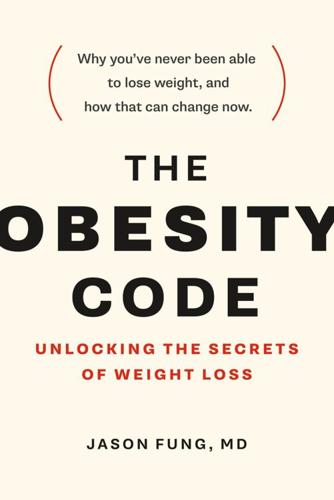
The Obesity Code: Unlocking the Secrets of Weight Loss
by
Jason Fung
Published 3 Mar 2016
It just so happens that this adaptation occurs almost immediately and persists long term. The men in the Minnesota Starvation Experiment should have lost 78 pounds (35.3 kilograms), but the actual weight lost was only 37 pounds (16.8 kilograms)—less than half of what was expected. More and more severe caloric restriction was required to continue losing weight. Sound familiar? What happened to their weight after the semi-starvation period? During the semi-starvation phase, body fat dropped much quicker than overall body weight as fat stores are preferentially used to power the body. Once the participants started the recovery period, they regained the weight rather quickly, in about twelve weeks.
…
He spent most of the rest of his career at the University of Minnesota, where he would play a dominant role in defining the current nutritional landscape. During World War II, Dr. Keys led the development of the K-rations, which would form the basis of military nutrition in the United States. He studied the effects of severe caloric restriction in the famous Minnesota Starvation Experiment (discussed in chapter 3). However, his crowning achievement is considered to be the Seven Countries Study, a long-term observational study of diet and heart disease. In the post–World War II years, starvation and malnutrition were the major nutritional challenges.
…
Insulin causes salt and water retention in the kidney, so lowering insulin levels rids the body of excess salt and water. Fasting is often accompanied by an early, rapid weight loss. For the first five days, weight loss averages 1.9 pounds (0.9 kilograms) per day, far exceeding the loss that could be expected from the caloric restriction, and is probably due to diuresis. Diuresis reduces bloating and may also lower blood pressure slightly. Growth hormone GROWTH HORMONE IS known to increase the availability and utility of fats for fuel. It also helps to preserve muscle mass and bone density.9 Growth hormone secretion is difficult to measure accurately because of its intermittent release, but it decreases steadily with age.
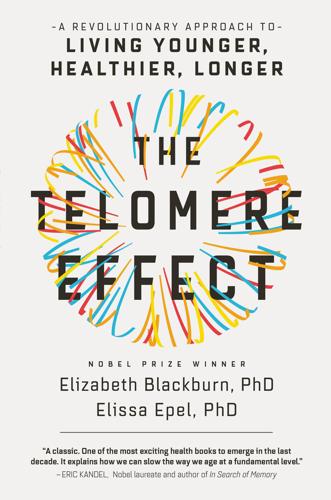
The Telomere Effect: A Revolutionary Approach to Living Younger, Healthier, Longer
by
Dr. Elizabeth Blackburn
and
Dr. Elissa Epel
Published 3 Jan 2017
This is a thought exercise—no such cafeteria exists in the real world—but it reflects the habits of people who believe that by restricting their calories to 25 or 30 percent less than a normal healthy intake, they will live longer. People who practice caloric restriction teach themselves to have a different reaction to hunger. When they feel the pang of an empty stomach, they don’t feel stressed or unhappy. Instead, they say to themselves, Yes! I’m reaching my goal. They are incredibly good at planning and thinking about the future. For example, a caloric restriction practitioner in one of our studies was eagerly organizing his 130th birthday, even though he was only around sixty years old at the time.20 If only these people were worms. Or mice. There is little doubt that extreme caloric restriction extends the longevity of various lower species.
…
There is little doubt that extreme caloric restriction extends the longevity of various lower species. In at least some breeds of mice on restricted diets, telomeres appear to lengthen. They also have fewer senescent cells in the liver, an organ that is one of the first places senescent cells will build up.21 Caloric restriction can improve insulin sensitivity, too, and reduce oxidative stress. But it’s harder to pinpoint the effects of caloric restriction on larger animals. In one study, monkeys who ate 30 percent fewer calories than normal had a longer healthspan and longer life—but only when compared to a control group of monkeys who ate a lot of sugar and fat. In a second study, monkeys on a similarly restricted diet were compared to monkeys who ate normal portions of healthy food.
…
Having them eat in circumstances that were abnormal, and quite possibly stressful, could have affected the outcome in ways we don’t yet understand. For now, it looks as if caloric restriction has no positive effect on human telomeres. Janet Tomiyama, now a psychology professor at UCLA, conducted a study during her postdoctoral fellowship at UCSF. She managed to round up a group of people from across the United States who were successful at long-term caloric restriction for an intensive study where she also examined telomeres in different blood cell types. (As you may imagine, such people are rare.) To our surprise, their telomeres weren’t any longer than the normal or even the overweight control group.

Scale: The Universal Laws of Growth, Innovation, Sustainability, and the Pace of Life in Organisms, Cities, Economies, and Companies
by
Geoffrey West
Published 15 May 2017
Taken at face value, the theory predicts that if you consistently decrease your food intake by 10 percent (a couple of hundred calories a day) you could live for up to 10 percent longer (up to ten years more). Figure 30 shows data on caloric restriction from experiments on mice performed in the 1980s by Roy Walford, who was a pathologist at the UCLA School of Medicine and the leading advocate of caloric restriction for extending life span.20 The data are presented in the form of survival curves for cohorts of mice under different levels of food intake. The effects are indeed dramatic and are consistent with the prediction of a 10 percent increase in life span resulting from a 10 percent caloric restriction but actually show a smaller effect than the predicted doubling of life span resulting from a massive halving of the caloric intake—life span increased by about 75 percent rather than the predicted 100 percent.
…
I’ll return to discuss these extraordinary changes in later chapters using the same conceptual framework to understand how this happened. C. CALORIC RESTRICTION AND EXTENDING LIFE SPAN: We just saw that life span decreases inversely with cellular metabolic rate. Because this systematically decreases with increasing mass across animals, less damage is incurred per cell, resulting in larger animals living longer. However, within species an individual like each of us can decrease its cellular metabolic rate simply by eating less, resulting in less metabolic damage per cell and potentially in an increase in its life span. This strategy is called caloric restriction. It has a long, somewhat controversial, history and has been the focus of many studies across a range of animals.
…
This provides the scientific basis for asking questions about what parameters can be manipulated to extend life and arrest aging, if that is the goal. For example, combining the scaling laws with Figures 23–30 gives quantitative estimates of how long life can be extended by changing body temperature or eating less. Survival curves for mice under various degrees of caloric restriction showing a concomitant increase in life span. Furthermore, because this theory is just one piece of a much larger unified framework integrating much of life history, it can also help address the crucial question of what some of the unintended consequences of manipulating life span might be.

Ageless: The New Science of Getting Older Without Getting Old
by
Andrew Steele
Published 24 Dec 2020
Gavrilov, ‘Comments on dietary restriction, Okinawa diet and longevity’, Gerontology 58, 221–3 (2012). DOI: 10.1159/000329894 ageless.link/jkkwhw DR mice with flu die more often … Elizabeth M. Gardner, ‘Caloric restriction decreases survival of aged mice in response to primary influenza infection’, J. Gerontol. A Biol. Sci. Med. Sci. 60, 688–94 (2005). DOI: 10.1093/gerona/60.6.688 ageless.link/vw6q4r … a few participants … stop due to anaemia … Eric Ravussin et al., ‘A 2-year randomized controlled trial of human caloric restriction: Feasibility and effects on predictors of health span and longevity’, J. Gerontol. A Biol. Sci. Med. Sci. 70, 1097–104 (2015). DOI: 10.1093/gerona/glv057 ageless.link/ci3m6v When you eat as well as what you eat … This is a provocative review advocating the benefits of intermittent fasting, and suggesting how to go about it if you want to try: Rafael de Cabo and Mark P.
…
Next, we’ll turn to what this exciting new science uncovered. *The data from the female rats in the experiment are somewhat more confusing – not least because some of them died very early in the experiment during a particularly hot spell, distorting the results. *You’ll often see dietary restriction referred to as ‘calorie restriction’ or ‘caloric restriction’, abbreviated as CR. Given that, starting with McCay’s experiments, the importance of optimal nutrition (ON) as well as cutting back calories was recognised, it’s sometimes known as CRON, and its disciples affectionately referred to as CRONies. Nonetheless, I’m going to call it ‘dietary restriction’, or DR, a bit of pedantry needed because modern research has called into question whether it’s the calories themselves which are important, or other aspects of diet like protein, or individual amino acids.
…
David Stipp, The Youth Pill: Scientists at the Brink of an Anti-Aging Revolution (Current Publishing, 2010) ageless.link/7oqrph Live, fast, die old… Clive McCay … the first meticulous experiment … Clive M. McCay and Mary F. Crowell, ‘Prolonging the life span’, Sci. Mon. 39, 405–14 (1934) ageless.link/is3i7p Additional background on McCay’s career and the development of dietary restriction research more generally can be found in these two articles: Hyung Wook Park, ‘Longevity, aging, and caloric restriction: Clive Maine McCay and the construction of a multidisciplinary research program’, Hist. Stud. Nat. Sci. 40, 79–124 (2010). DOI: 10.1525/hsns.2010.40.1.79 ageless.link/dggrds Roger B. McDonald and Jon J. Ramsey, ‘Honoring Clive McCay and 75 years of calorie restriction research’, J. Nutr. 140, 1205–10 (2010).
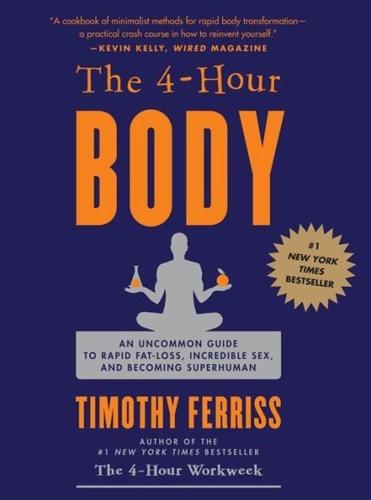
The 4-Hour Body: An Uncommon Guide to Rapid Fat-Loss, Incredible Sex, and Becoming Superhuman
by
Timothy Ferriss
Published 1 Dec 2010
This is popular for moderate weight loss, which typically appears starting in the third week and averages one pound of loss per week thereafter.3 Some research suggests IF confers the same life-extension benefits as caloric restriction only when calories are consumed during daylight hours. This would, if accurate, make the Fast-5 better for fat loss than longevity. ADCR: Alternate Day Caloric Restriction (ADCR) requires that calories be cut 50–80% every other day. It has been shown to improve insulin sensitivity, autoimmune disease, and even asthma after just two weeks. Protein cycling: Dr. Ron Mignery, author of the Protein-Cycling Diet, suggests that even a single day per week of restricting protein to no more than 5% of maintenance calories can produce effects similar to extended caloric restriction.
…
If I drank beer, I’d have a few pints of Paulaner Hefe-Weizen.1 I make myself a little sick each Saturday and don’t want to look at any junk for the rest of the week. Paradoxically, dramatically spiking caloric intake in this way once per week increases fat-loss by ensuring that your metabolic rate (thyroid function and conversion of T4 to T3, etc.) doesn’t downshift from extended caloric restriction. That’s right: eating pure crap can help you lose fat. Welcome to Utopia. There are no limits or boundaries during this day of gluttonous enjoyment. There is absolutely no calorie counting on this diet, on this day or any other. Start the diet at least five days before your designated cheat day.
…
Tracy Reifkind had lost more than 100 pounds (45 pounds of fat in the first 12 weeks) and won her bet. But the numbers alone don’t do her physique justice: this mom of two from a two-income family looked 10 years younger at 129.6 pounds. The secret wasn’t marathon aerobics sessions, nor was it severe caloric restriction. It was the Russian kettlebell swing, twice a week for an average of 15–20 minutes. Her peak session length was 35 minutes. She was introduced to kettlebells by her husband, Mark Reifkind, a former national team coach in powerlifting who also competed against Kurt Thomas in Olympic gymnastics.
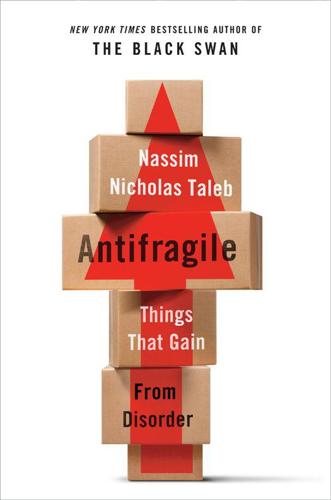
Antifragile: Things That Gain From Disorder
by
Nassim Nicholas Taleb
Published 27 Nov 2012
Again, limited, low-dose poisoning triggers healthy benefits. Many claim that caloric restriction (permanent or episodic) activates healthy reactions and switches that, among other benefits, lengthen life expectancy in laboratory animals. We humans live too long for researchers to test if such restriction increases our life expectancy (if the hypothesis is true, then the subjects of the test would outlive the researchers). But it looks like such restriction makes humans healthier (and may also improve their sense of humor). But since abundance would bring the opposite effect, this episodic caloric restriction can be also interpreted as follows: too much regular food is bad for you, and depriving humans of the stressor of hunger may make them live less than their full potential; so all hormesis seems to be doing is reestablishing the natural dosage for food and hunger in humans.
…
Marglin, Decolonizing Knowledge: From Development to Dialogue. Oxford University Press, 185–248. Martin, B., M. P. Mattson, et al., 2006, “Caloric Restriction and Intermittent Fasting: Two Potential Diets for Successful Brain Aging.” Ageing Research Reviews 5(3): 332–353. Masoro, E. J., 1998, “Hormesis and the Antiaging Action of Dietary Restriction.” Experimental Gerontology 33(1–2): 61–66. Mattson, M. P., 2008, “Hormesis Defined.” Ageing Research Reviews 7(1): 1–7. Mattson, M. P., and R. Wan, 2005, “Beneficial Effects of Intermittent Fasting and Caloric Restriction on the Cardiovascular and Cerebrovascular Systems.” Journal of Nutritional Biochemistry 16(3): 129–137.
…
Being ill, incurably ill, he tried to put an end to both his life and his suffering by abstinence, and only succeeded in ending the latter, as, according to Montaigne, his health was restored. But I am citing the story in spite of its apocryphal nature simply because, from a scientific perspective, it seems that the only way we may manage to extend people’s lives is through caloric restriction—which seems to cure many ailments in humans and extend lives in laboratory animals. But, as we will see in the next section, such restriction does not need to be permanent—just an occasional (but painful) fast might do. We know we can cure many cases of diabetes by putting people on a very strict starvation-style diet, shocking their system—in fact the mechanism had to have been known heuristically for a long time since there are institutes and sanatoria for curative starvation in Siberia.

Beyond Bigger Leaner Stronger: The Advanced Guide to Building Muscle, Staying Lean, and Getting Strong
by
Michael Matthews
Published 15 Jun 2014
“Effect of calorie restriction on resting metabolic rate and spontaneous physical activity.” Obesity 15, no. 12 (2007): 2964-2973. 52. Redman, Leanne M., Leonie K. Heilbronn, Corby K. Martin, Lilian de Jonge, Donald A. Williamson, James P. Delany, and Eric Ravussin. “Metabolic and behavioral compensations in response to caloric restriction: implications for the maintenance of weight loss.” PLoS One 4, no. 2 (2009): e4377. 53. Harris, Ann M., Michael D. Jensen, and James A. Levine. “Weekly changes in basal metabolic rate with eight weeks of overfeeding.” Obesity 14, no. 4 (2006): 690-695. 54. Dulloo, Abdul G., Jean Jacquet, and Jean-Pierre Montani.
…
Taylor. “Low calorie dieting increases cortisol.” Psychosomatic medicine 72, no. 4 (2010): 357-364. 64. Redman, Leanne M., Leonie K. Heilbronn, Corby K. Martin, Lilian De Jonge, Donald A. Williamson, James P. Delany, and Eric Ravussin. “Metabolic and behavioral compensations in response to caloric restriction: implications for the maintenance of weight loss.” PLoS One 4, no. 2 (2009): e4377. 65. Durrant, Merril L., J. S. Garrow, P. Royston, Susan F. Stalley, Shirley Sunkin, and Penelope M. Warwick. “Factors influencing the composition of the weight lost by obese patients on a reducing diet.” British journal of nutrition 44, no. 03 (1980): 275-285. 66.
…
“Effect of skipping breakfast on subsequent energy intake.” Physiology & behavior 119 (2013): 9-16. 71. Redman, Leanne M., Leonie K. Heilbronn, Corby K. Martin, Lilian De Jonge, Donald A. Williamson, James P. Delany, and Eric Ravussin. “Metabolic and behavioral compensations in response to caloric restriction: implications for the maintenance of weight loss.” PLoS One 4, no. 2 (2009): e4377. 72. Davis, Jon F., Derrick L. Choi, and Stephen C. Benoit. “Insulin, leptin and reward.” Trends in Endocrinology & Metabolism 21, no. 2 (2010): 68-74. 73. Davis, Jon F. “Adipostatic regulation of motivation and emotion.”
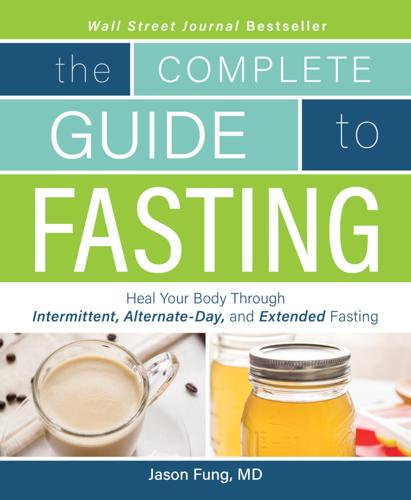
Complete Guide to Fasting: Heal Your Body Through Intermittent, Alternate-Day, and Extended Fasting
by
Jimmy Moore
and
Jason Fung
Published 18 Oct 2016
Your body cannot run a deficit indefinitely—it will eventually run out of fat to burn—so it plans ahead and decreases your energy expenditure. The end result is a decreased BMR. This has been proven repeatedly by experiments over the last century, and we’ll talk about it in more detail in Chapter 5. Because of this well-known “starvation mode” effect of daily caloric restriction, many people assume that fasting will result in a similar but more severe decrease in BMR. Luckily, this does not happen. If short-term fasting dropped our metabolism, humans as a species would not likely have survived. Consider the situation of repeated feast/famine cycles. During long winters back in the Paleolithic era, there were many days where no food was available.
…
The body engages in “housecleaning” all the time, but when it gets a break from the constant digestion of large amounts of food, it may be able to focus more energy on repair and restoration. This is why the strongest stimulus to autophagy currently known is fasting, and why fasting alone, unique among diets, stimulates autophagy—simple caloric restriction or dieting isn’t enough. By eating constantly, from the time we wake up to the time we sleep, we prevent the activation of autophagy’s cleansing pathways. Simply put, fasting cleanses the body of unhealthy or unnecessary cellular debris. This is the reason longer fasts were often called cleanses or detoxifications.
…
Nixon, “Properties of the Endosomal-Lysosomal System in the Human Central Nervous System: Disturbances Mark Most Neurons in Populations at Risk to Degenerate in Alzheimer’s Disease,” Journal of Neuroscience 16, no. 1 (1996): 186–99. A. V. Witte, M. Fobker, R. Gellner, S. Knecht, and A. Flöel, “Caloric Restriction Improves Memory in Elderly Humans,” Proceedings of the National Academy of Sciences of the United States of America 106, no. 4 (2009): 1255–60. Danielle Glick, Sandra Barth, and Kay F. Macleod, “Autophagy: Cellular and Molecular Mechanisms,” Journal of Pathology 221, no. 1 (2010): 3–12. Erin L.

Lifespan: Why We Age—and Why We Don't Have To
by
David A. Sinclair
and
Matthew D. Laplante
Published 9 Sep 2019
“A clear understanding of the biology of ageing, as opposed to the biology of individual age-related diseases, could be the critical turning point for novel approaches in preventative strategies to facilitate healthy human ageing,” they wrote. “Caloric restriction (CR) offers a powerful paradigm to uncover the cellular and molecular basis for the age-related increase in overall disease vulnerability that is shared by all mammalian species.” J. A. Mattison, R. J. Colman, T. M. Beasley, et al., “Caloric Restriction Improves Health and Survival of Rhesus Monkeys,” Nature Communications, January 17, 2017, https://www.nature.com/articles/ncomms14063. 11. Y. Zhang, A. Bokov, J. Gelfond, et al., “Rapamycin Extends Life and Health in C57BL/6 Mice,” Journals of Gerontology, Series A: Biological Sciences and Medical Sciences 69, no. 2 (February 2014): 119–30, https://www.ncbi.nlm.nih.gov/pubmed/23682161. 12.
…
You’ll recall that when the enzyme known as mTOR is inhibited, it forces cells to spend less energy dividing and more energy in the process of autophagy, which recycles damaged and misfolded proteins. That act of hunkering down ends up being good for prolonged vitality in every organism we’ve studied. What we’re coming to learn is that mTOR isn’t impacted only by caloric restriction.23 If you want to keep mTOR from being activated too much or too often, limiting your intake of amino acids is a good way to start, so inhibiting this particular longevity gene is really as simple as limiting your intake of meat and dairy. It’s also increasingly clear that all essential amino acids aren’t equal.
…
WADDINGTON (November 8, 1905–September 26, 1975): British geneticist and philosopher who laid the foundations of systems biology and epigenetics. His Waddington Landscape was proposed to help understand how a cell can divide to become the hundreds of different cell types in the body. ROY L. WALFORD (June 29, 1924–April 27, 2004): American biologist who rejuvenated the field of caloric restriction. One of eight crew members inside Arizona’s Biosphere 2 from 1991 to 1993. In medical school, reportedly used statistical analysis to predict the results of a roulette wheel in Reno, Nevada, to pay for medical school and a yacht, and sailed the Caribbean for over a year. H. G. WELLS (September 21, 1866–August 13, 1946): British science fiction writer who foresaw air raids in World War II, tanks, nuclear weapons, satellite television, and the internet.
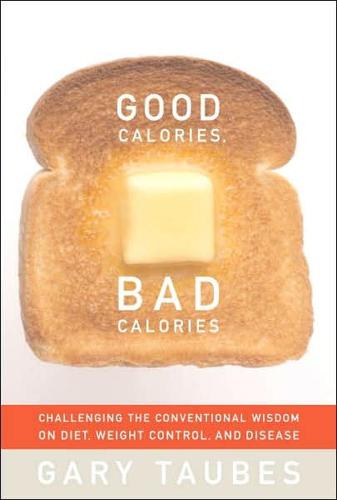
Good Calories, Bad Calories: Challenging the Conventional Wisdom on Diet, Weight Control, and Disease
by
Gary Taubes
Published 25 Sep 2007
They are normally short-lived, which supports the idea that the greater the body fat the shorter the lifespan, but on a lifelong very low-calorie diet they will live as long as or longer than lean mice of a similar genetic inheritance but without the mutation that causes obesity. They will do this even though they still have more than twice the body fat of the lean mice. Indeed, when these experiments were done in the early 1980s by David Harrison of the Jackson Laboratory in Bar Harbor, Maine, these calorically restricted ob/ob mice lived just as long as calorically restricted lean mice, even though the former were nearly four times as fat as the latter. “Longevities,” Harrison concluded, “were related to food consumption rather than to the degree of adiposity.” This has inevitably been the case, whenever these experiments are done. The calorie-restricted animals live longer because of some metabolic or hormonal consequence of semi-starvation, not because they are necessarily leaner or lighter.
…
Four years later, when the NIH again hosted a conference on obesity, the conference report concluded that “the importance of exercise in weight control is less than might be believed, because increases in energy expenditure due to exercise also tend to increase food consumption, and it is not possible to predict whether the increased caloric output will be outweighed by the greater food intake.” In 1989, when Xavier Pi-Sunyer, director of the Obesity Research Clinic at St. Luke’s–Roosevelt Hospital Center in New York, reviewed the evidence that exercise “without caloric restriction” could lead to weight loss, he still found little reason for optimism, despite what the press was now claiming as gospel. “Decreases, increases, and no changes in body weight and body composition have been observed,” Pi-Sunyer noted. That same year, Danish investigators reported that they had indeed trained previously sedentary individuals to run marathons (26.2 miles).
…
Pennington may be on the right track in the practical treatment of obesity,” Hegsted said afterward. “His high percentage of favorable results is impressive and calls for more extensive and for impartial comparative trials by others”—although, Hegsted concluded, “any method of [obesity] treatment other than caloric restriction still requires study by all methods that can be brought to bear on the problem.” The Harvard symposium led to the publication of Pennington’s presentation in The New England Journal of Medicine, and this, along with the Vogue article, prompted the competing medical journals to address it. In a scathing editorial called “Freak Diets!”

The Cancer Chronicles: Unlocking Medicine's Deepest Mystery
by
George Johnson
Published 26 Aug 2013
[http://cancerprogressreport.org] 29. caloric restriction: The mechanisms are complex, involving insulin regulation and other cellular processes. See Stephen D. Hursting et al., “Calorie Restriction, Aging, and Cancer Prevention,” Annual Review of Medicine 54 (February 2003): 131–52 [http://www.annualreviews.org/doi/abs/10.1146/annurev.med.54.101601.152156]; D. Kritchevsky, “Caloric Restriction and Cancer,” Journal of Nutritional Science and Vitaminology 47, no. 1 (February 2001): 13–19 [http://www.ncbi.nlm.nih.gov/pubmed/11349885]; Sjoerd G. Elias et al., “Transient Caloric Restriction and Cancer Risk (The Netherlands),” Cancer Causes & Control 18, no. 1 (February 2007): 1–5 [http://www.ncbi.nlm.nih.gov/pmc/articles/PMC1764866]; and David M.
…
Yet even that has come under challenge as a serious cancer risk, and it is possible that sugar may pose a greater danger by increasing blood insulin levels and stimulating the growth of tumors. In the end, it probably doesn’t matter so much what you eat as how much. Obesity—like old age, sunlight, radioisotopes, and cigarettes—has joined the short list of unambiguous instigators of cancer. Conversely there is evidence that caloric restriction reduces the likelihood of cancer. You lower your metabolism. Like a lizard. Nancy included a variety of vegetables and fruits in our diet mostly because she liked them. But she had reason to worry more than some others about cancer. Her mother had suffered through a mastectomy and chemotherapy shortly before we married.
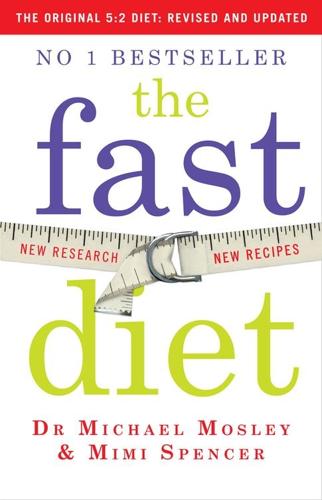
The Fast Diet: Revised and Updated: Lose Weight, Stay Healthy, Live Longer
by
Mimi Spencer
Published 18 Dec 2014
‘Apparent prolongation of the life span of rats by intermittent fasting’. Journal of Nutrition, 1945. 6. Fontana, Luigi, et al, ‘Medical Research: Treat Ageing’. Nature, July 2014 7. Bergamini, E, Cavallini, G, Donati, A and Gori, Z, Pisa, Italy. ‘The role of autophagy in aging: its essential part in the anti-aging mechanism of caloric restriction’. Annals of the New York Academy of Science, October 2007 8. Longo, Valter D et al. ‘Prolonged fasting reduces IGF-1/PKA to promote hematopoietic-stem-cell-based regeneration and reverse immunosuppression’. Cell Stem Cell, 14(6), June 2014 9. Varady, KA, Surabhi Bhutani, Church EC and Kempel M.
…
‘Exercise training increases size of hippocampus and improves memory’. Proceedings of the National Academy of Science USA, January 2011 14. Halagappa, VK, Guo, Z, Pearson, M, Matsuoka, Y, Cutler, RG, Laferla, FM and Mattson, MP, National Institute on Ageing, Baltimore, MD, US. ‘Intermittent fasting and caloric restriction ameliorate age-related behavioral deficits in the triple-transgenic mouse model of Alzheimer’s disease’. Neurobiology of Disease, April 2007 15. Shirayama, Y, Chen, AC, Nakagawa, S, Russell, DS and Duman, RS, Yale University School of Medicine, New Haven, Connecticut, US. ‘Brain-derived neurotrophic factor produces antidepressant effects in behavioral models of depression’.
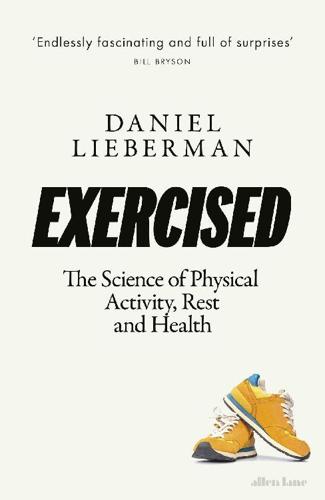
Exercised: The Science of Physical Activity, Rest and Health
by
Daniel Lieberman
Published 2 Sep 2020
The results were disputed and refuted by a second twenty-three-yearlong study conducted at the National Institute on Aging and published in 2012 by Mattison and colleagues. This study compared control monkeys fed a more healthy, normal diet with monkeys fed a low-calorie diet and found no significant extension of life from caloric restriction. See Colman, R. J., et al. (2009), Caloric restriction delays disease onset and mortality in rhesus monkeys, Science 325:201–4; Mattison, J. A., et al. (2012), Impact of caloric restriction on health and survival in rhesus monkeys from the NIA study, Nature 489:318–21. 55 For a comprehensive survey (including references), see Gurven, M., and Kaplan, H. (2007), Hunter-gatherer longevity: Cross-cultural perspectives, Population and Development Review 33:321–65.
…
Kinney and H. N. Ticker (New York: Raven Press), 61–77. 16 A 2015 experiment that put volunteers on the same starvation diet for just two weeks and measured organ size reductions using modern technology yielded comparable results. See Müller, M. J., et al. (2015), Metabolic adaptation to caloric restriction and subsequent refeeding: The Minnesota Starvation Experiment revisited, American Journal of Clinical Nutrition 102:807–19. 17 In science, a “theory” is not an untested idea (a hypothesis); a theory is a well-established, validated understanding of how the world works. Natural selection is as well validated as the theories of gravity and plate tectonics. 18 Marlowe, F.
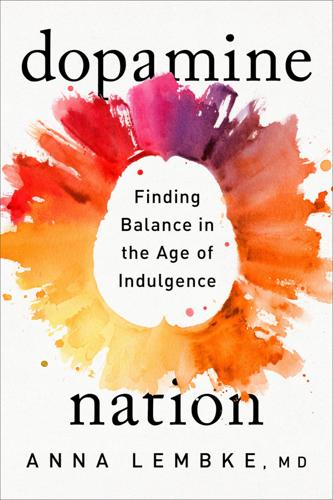
Dopamine Nation: Finding Balance in the Age of Indulgence
by
Anna Lembke
Published 24 Aug 2021
these findings are controversial: John B. Cologne and Dale L. Preston, “Longevity of Atomic-Bomb Survivors,” Lancet 356, no. 9226 (July 22, 2000): 303–7, https://doi.org/10.1016/S0140-6736(00)02506-X. calorie restriction extended lifespan: Mark P. Mattson and Ruiqian Wan, “Beneficial Effects of Intermittent Fasting and Caloric Restriction on the Cardiovascular and Cerebrovascular Systems,” Journal of Nutritional Biochemistry 16, no. 3 (2005): 129–37, https://doi.org/10.1016/j.jnutbio.2004.12.007. “starving myself two days a week”: Aly Weisman and Kristen Griffin, “Jimmy Kimmel Lost a Ton of Weight on This Radical Diet,” Business Insider, January 9, 2016.
…
Mattson, Mark P. “Energy Intake and Exercise as Determinants of Brain Health and Vulnerability to Injury and Disease.” Cell Metabolism 16, no. 6 (2012): 706–22. https://doi.org/10.1016/j.cmet.2012.08.012. Mattson, Mark P., and Ruiqian Wan. “Beneficial Effects of Intermittent Fasting and Caloric Restriction on the Cardiovascular and Cerebrovascular Systems.” Journal of Nutritional Biochemistry 16, no. 3 (2005): 129–37. https://doi.org/10.1016/j.jnutbio.2004.12.007. McClure, Samuel M., David I. Laibson, George Loewenstein, and Jonathan D. Cohen. “Separate Neural Systems Value Immediate and Delayed Monetary Rewards.”
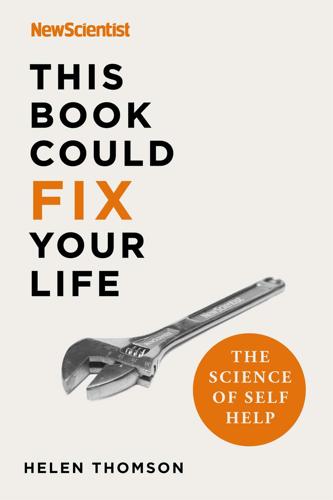
This Book Could Fix Your Life: The Science of Self Help
by
New Scientist
and
Helen Thomson
Published 7 Jan 2021
Drugs called senolytics go on a kind of seek-and-destroy mission around the body, clearing out the knackered cells that cause ageing. They are no longer a pipe dream: trials of these drugs are going on and there’s talk of them being in the clinic in under five years. Until then, there are other promising ways to increase healthspan. One way that looks good in animals, but is by no means confirmed in humans, is caloric restriction – fasting. It seems to affect a series of cellular processes – a ‘pathway’, in the jargon – called mTOR, which is thought to have evolved to help us survive periods of starvation. If you eat, this pathway is switched on, telling cells to divide and grow. If you don’t eat, it switches off. This triggers protective pathways, which include those that scavenge dysfunctional organelles and molecules for energy.
…
This triggers protective pathways, which include those that scavenge dysfunctional organelles and molecules for energy. This creates a waste disposal system for damaged cells and therefore helps remove the zombies that build in tissues and organs and slows the ageing process. Early evidence suggests that mTOR gets stuck in the ‘on’ position as we age, so caloric restriction may help to switch it back off. The evidence is still not clear-cut in humans and nobody should be starving themselves just yet. Given our relatively long lifespans, it will take several years and several long-term studies to really get to grips with its effects, although accumulating data from several clinical trials indicate that we’re on the right track: periodic fasting results in some of the same physiological adaptations in humans that have been shown to improve health and slow the damage of ageing in animals.
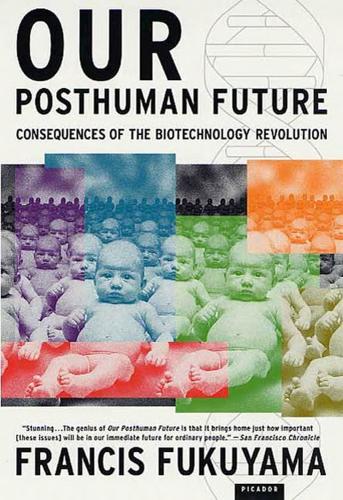
Our Posthuman Future: Consequences of the Biotechnology Revolution
by
Francis Fukuyama
Published 1 Jan 2002
Banks and Michael Fossel, “Telomeres, Cancer, and Aging: Altering the Human Life Span,” Journal of the American Medical Association 278 (1997): 1345–1348. 7 Nicholas Wade, “Searching for Genes to Slow the Hands of Biological Time,” The New York Times, September 26, 2000, p. D1; Cheol-Koo Lee and Roger G. Klopp et al., “Gene Expression Profile of Aging and Its Retardation by Caloric Restriction,” Science 285 (1999): 1390–1393. 8 Kirkwood (1999), p. 166. 9 For a sample of the discussion on stem cells, see Eric Juengst and Michael Fossel, “The Ethics of Embryonic Stem Cells—Now and Forever, Cells without End,” Journal of the American Medical Association 284 (2000): 3180–3184; Juan de Dios Vial Correa and S.
…
“Why Pro-Lifers Are Missing the Point: The Debate over Fetal-Tissue Research Overlooks the Big Issue.” Time, February 12, 2001, p. 60. Kurzweil, Ray. The Age of Spiritual Machines: When Computers Exceed Human Intelligence. London: Penguin Books, 2000. Lee, Cheol-Koo, Roger G. Klopp, et al. “Gene Expression Profile of Aging and Its Retardation by Caloric Restriction.” Science 285 (1999): 1390–1393. Lemann, Nicholas. The Big Test: The Secret History of the American Meritocracy. New York: Farrar, Straus and Giroux, 1999. Lenoir, Noelle. “Europe Confronts the Embryonic Stem Cell Research Challenge.” Science 287 (2000): 1425–1426. LeVay, Simon.
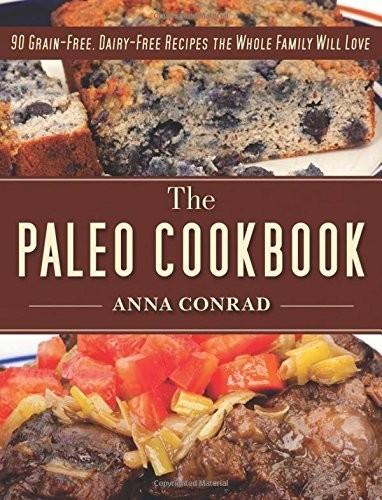
The Paleo Cookbook: 90 Grain-Free, Dairy-Free Recipes the Whole Family Will Love
by
Anna Conrad
and
Dustin Mohr
Published 2 Jan 2014
Oils and fats Consume no more than 4 Tbsp each day if your goal is to lose or maintain your weight. Acceptable fats include: Coconut oil Animal tallow Olive oil Avocado oil Poultry Acceptable poultry meats include: Whole chicken Whole turkey Whole game hens Fatty meats Our paleo ancestors may have eaten these, but their diet was calorically restricted whereas ours are not. Today, there is no need for most of us to consume extra fat in order to get the necessary calories needed for energy each day. Acceptable fatty meats include: Bacon (with no artificial ingredients) Fatty beef roasts and other fatty cuts of beef Beef ribs Fatty ground beef T-bone steaks Poultry thighs, skin, legs, or wings Fatty pork chops and roasts Pork ribs Pork sausage (with no artificial ingredients) Lamb chops and roasts Leg of lamb Starchy vegetables There is some disagreement amongst paleo dieters as to whether or not starchy vegetables were available and used by our ancestors as a source of carbohydrates in their diet.

Early Retirement Extreme
by
Jacob Lund Fisker
Published 30 Sep 2010
Freeing oneself from the timing of even the evening meal is very liberating. All meals can now be eaten at home. Even missing one meal, that is, not eating for 48 hours, becomes possible. In fact, studies show that eating every other day, even when eating several meals that day, may increase longevity in the same way that constant caloric restriction does, at least in lab mice.92 Caloric restriction has been shown to extend longevity in two senses: not only does it mean more years of life, it means more healthy years, as the body shows increased resistance to cancer and other degenerative diseases. It's a subject worth studying. Eating out Americans spend close to half of their food budget having professionals cook for them.

The Diet Myth: Why America's Obsessions With Weight Is Hazardous to Your Health
by
Paul Campos
Published 4 May 2005
And while such an ambitiously 8 Fat Science restrictive definition of a healthy weight is becoming the medical ideal, even small amounts of weight loss can make a big difference in regard to improved health: According to the NIH, a 10% loss of body mass often leads to significant improvements in blood pressure and glucose tolerance (the latter is critical to avoiding diabetes). How then are Americans supposed to achieve these goals? Public health authorities assure us the best path to healthy weight loss is a combination of caloric restriction—a.k.a. dieting—and exercise. Unfortunately this classic prescription has an extremely high failure rate: The vast majority of dieters end up regaining all of the weight they lose, and many end up weighing more than they did prior to their attempts to lose weight. Given this record of failure, it’s not surprising that the pharmaceutical industry has spent billions of dollars attempting to develop safe and effective weight loss drugs.
…
Methods for voluntary weight loss and control. Ann Intern Med. 1993; 119:764–770. “The fen-phen craze was triggered . . .” Weintraub, M., Sundaresan, P.R., Madan, M., Schuster, B., Balder, A., Lasagna, L., Cox, C. Long-term weight control study. I (weeks 0 to 34). The enhancement of behavior modification, caloric restriction, and exercise by fenfluramine plus phentermine versus placebo. Clin Pharmacol Ther. 1992; 51:586– 594. “Editorials by obesity experts duly appeared . . .” Bray, G.A. Use and abuse of appetite-suppressant drugs in the treatment of obesity. Ann Intern Med. 1993; 119: 707–713. “When I arrived to testify at the FDA hearing . . .”
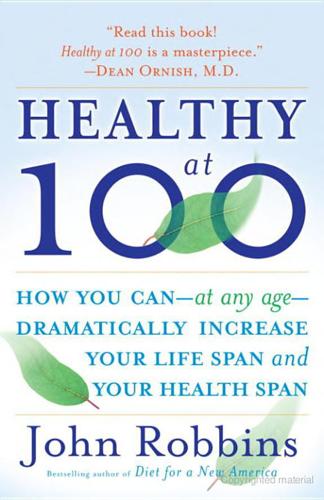
Healthy at 100: The Scientifically Proven Secrets of the World's Healthiest and Longest-Lived Peoples
by
John Robbins
Published 1 Sep 2006
His research at UCLA was funded for more than thirty-five years by the National Institutes of Health, and he published more than 350 articles on aging and health in medical journals. He writes: We can with an order of probability bordering on certainty extend maximum human life span by means of a calorically restricted optimal nutrition diet.…There is now abundant hard evidence—not testimonial evidence, not clinical anecdote, not based on plausibility arguments, and not even correlational evidence, although all these exist in plenitude—but hard, well-controlled and steadfastly confirmed experimental evidence that a low calorie diet that provides optimum nutrition will greatly extend average and maximum life spans, postpone the onset and decrease the frequencies of most or all of the “diseases of aging,” maintain biomarkers at levels younger than chronological age, maintain sexual potency, general vitality, and ability to engage in sports into advanced age, and delay deterioration of the brain.28 It is true that in many underdeveloped countries where overall caloric consumption is low, life spans are often painfully short.
…
Richard Weindruch and Rajinder Sohal, “Caloric Intake and Aging,” New England Journal of Medicine 1997, 337(14):986–94. 27. Kagawa’s work is cited in Roy Walford, Beyond the 120–Year Diet: How to Double Your Vital Years (Four Walls Eight Windows, 2000), p. 89. 28. Roy Walford, op. cit., pp. 13, 45. 29. T. E. Meyer et al., “Long-term caloric restriction ameliorates the decline in di-astolic function in humans,” Journal of the American College of Cardiology 2006, 47(2):398–402. 30. Jim Salter, “Study: Low-Calorie Diet Keeps Heart Young,” Associated Press, Jan. 12, 2006. 31. Roy Walford, op. cit., p. 17. CHAPTER FIVE: EAT WELL, LIVE LONG 1.
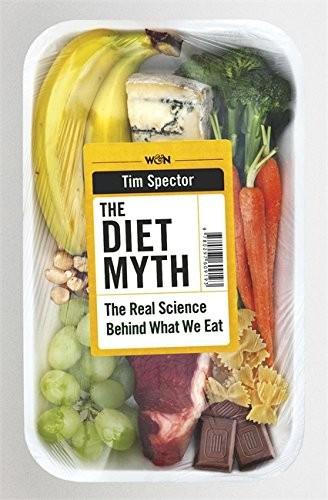
The Diet Myth: The Real Science Behind What We Eat
by
Tim Spector
Published 13 May 2015
The Fast Diet was championed by British TV presenter Michael Mosley.5 Michael was making a BBC documentary on diets and fasting and tried out different regimes on himself. One of these involved several days of continuous deprivation on just a few hundred calories a day. This pure form of permanent fasting called Caloric Restriction (CR), is only for the ultra-determined. Michael managed it and lost weight, but felt this was too tough physically and psychologically for most people with normal lives. After discussions with other scientists he tried out a more practical method which cut daily calories down to less than one-third of normal intake (500 calories for women, and 600 calories for men) for only two days a week, with five days normal eating.
…
Genetic influences in self-reported symptoms of obstructive sleep apnoea and restless legs: a twin study. 17 Shelton, H., Hygienic systems, vol. II, Health Research. (Pomeroy, WA, 1934). 18 Stote, K.S., Am J Clin Nutr (Apr 2007); 85(4): 981–8. A controlled trial of reduced meal frequency without caloric restriction in healthy, normal-weight, middle-aged adults. 19 Di Rienzi, S.C., eLife (1 Oct 2013); 2: e01102.doi:10.7554/eLife.01102. The human gut and groundwater harbor non-photosynthetic bacteria belonging to a new candidate phylum sibling to Cyanobacteria. 20 Watanabe, F., Nutrients (5 May 2014); 6(5): 1861–73.
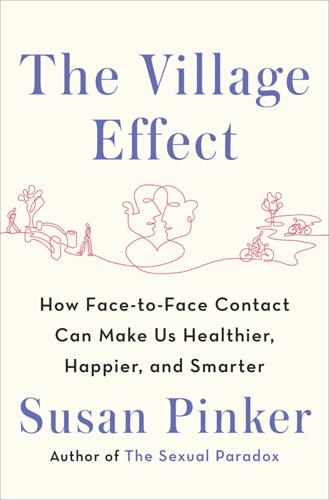
The Village Effect: How Face-To-Face Contact Can Make Us Healthier, Happier, and Smarter
by
Susan Pinker
Published 30 Sep 2013
Still, Teresa had spent seven decades, sixteen hours a day, doing back-breaking work, which held no appeal for me at all, even if that was one piece of the Sardinian longevity puzzle. Long treks by foot over steep inclines and hours of vigorous farm work are still features of daily life for most of the residents there. Even food deprivation—common in the region during and after both world wars—can add years to one’s life, some experts say. Though the impact of caloric restriction on longevity is controversial, famine (for a limited period, anyway) has been known to slow down or suspend age-related cell death.12 Recent research by cognitive neuroscientist Lisa Barnes has shown that going hungry as a child predicts a slower rate of cognitive decline in old age. By following more than six thousand older Americans as they aged, she and her team discovered that her subjects were a third less likely to suffer from serious memory loss or dementia if they reported not having had enough to eat as children.13 Zia Teresa, who lived through the deprivation caused by two world wars, may have benefited from brief periods of caloric restriction during the first half of her life.
…
By following more than six thousand older Americans as they aged, she and her team discovered that her subjects were a third less likely to suffer from serious memory loss or dementia if they reported not having had enough to eat as children.13 Zia Teresa, who lived through the deprivation caused by two world wars, may have benefited from brief periods of caloric restriction during the first half of her life. None of that sounded like a lot of fun to me, least of all consecrating one’s oldest daughter to a life of domestic slavery at the age of eight. At twenty-four, my daughter was planning for a future that revolved less around the confection of homemade pasta pockets than on a decade more of schooling, probably far from home.
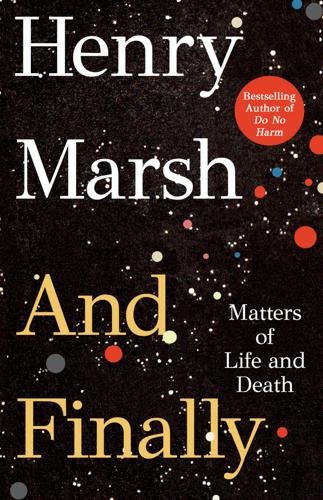
And Finally
by
Henry Marsh
And even if there are, it is quite likely that there will be all manner of unwanted side effects, of which cancer is only one, just as my hormone therapy has so many side effects. Or perhaps we will live for hundreds of years, but at the speed of a tortoise. Dietary restriction has been shown to increase significantly the lifespan and healthspan in mice, other small rodents and non-mammalian creatures. But apart from the fact that a life of severe caloric restriction might rather reduce the pleasure of being alive, the problem remains that what works in mice often fails to work in people. We are not, it has been observed, large mice. And scaling up such experiments into people will pose all sorts of ethical problems, which may well be insurmountable. But the research will continue, funded by anxious, ageing billionaires, who are driven by the selfish, hedonistic greed that is destroying so much of life on our planet.
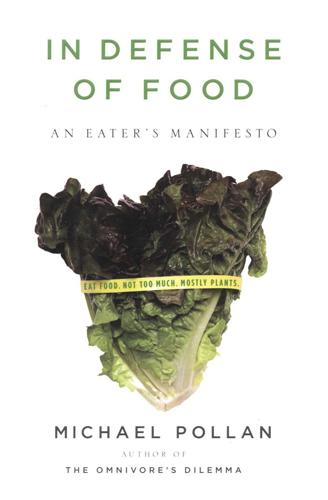
In defense of food: an eater's manifesto
by
Michael Pollan
Published 15 Dec 2008
Journal of the American Medical Association. 295.13 (2006): 1577–78. Heilbronn, Leonie K., et al. “Effect of 6-Month Calorie Restriction on Biomarkers of Longevity, Metabolic Adaptation, and Oxidative Stress in Overweight Individuals.” Journal of the American Medical Association. 295.13 (2006): 1539–48. Meyer, Timothy E., et al. “Long-Term Caloric Restriction Ameliorates the Decline in Diastolic Function in Humans.” Journal of the American College of Cardiology. 47.2 (2006): 398–402. Seligman, Katherine. “Iron Will.” San Francisco Chronicle (September 2, 2007). On drinking and the French paradox: Criqui, M.H., and Brenda L. Ringel. “Does Diet or Alcohol Explain the French Paradox?”
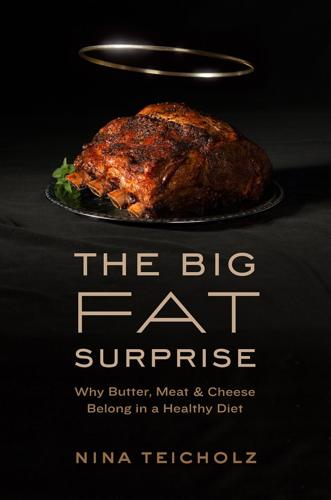
The Big Fat Surprise: Why Butter, Meat and Cheese Belong in a Healthy Diet
by
Nina Teicholz
Published 12 May 2014
Gordon, Jr. and Amelia Cherkes, “Unesterified Fatty Acids in Human Blood Plasma,” Journal of Clinical Investigation 35, no. 2 (1956): 206–212. can be created by the liver: Combined Staff Clinic, “Obesity,” American Journal of Medicine 19, no. 1 (1955): 117 related to the transition period: Stephen D. Phinney et al., “The Human Metabolic Response to Chronic Ketosis without Caloric Restriction: Physical and Biochemical Adaption,” Metabolism 32, no. 8 (1983): 757–768; P. C. Kelleher et al., “Effects of Carbohydrate-Containing and Carbohydrate-Restricted Hypocaloric and Eucaloric Diets on Serum Concentrations of Retinol-Binding Protein, Thyroxine-Binding Prealbumin and Transferrin,” Metabolism 32, no. 1 (1983): 95–101; G.
…
“Coronary Heart Disease Mortality Among Seventh-Day Adventists with Differing Dietary Habits: A Preliminary Report.” American Journal of Clinical Nutrition 31, no. 10 suppl. (October 1978): S191–S198. Phinney, Stephen D., Bruce R. Bistrian, R. R. Wolfe, and G. L. Blackburn. “The Human Metabolic Response to Chronic Ketosis Without Caloric Restriction: Physical and Biochemical Adaption.” Metabolism 32, no. 8 (August 1983): 757–768. Phinney, Stephen D., Edward S. Horton, Ethan A. H. Sims, John S. Hanson, Elliot Danforth Jr., and Betty M. Lagrange. “Capacity for Moderate Exercise in Obese Subjects after Adaptation to a Hypocaloric, Ketogenic Diet.”
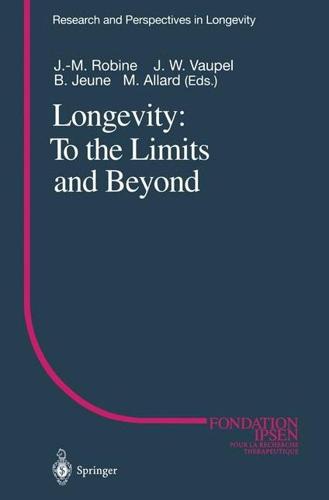
Longevity: To the Limits and Beyond (Research and Perspectives in Longevity)
by
Jean-Marie Robine
,
James W. Vaupel
,
Bernard Jeune
and
Michel Allard
Published 2 Jan 1997
SOD and catalase operate in partnership to render the superoxide radical harmless, with SOD converting superoxide to hydrogen peroxide (itself a potent oxidising agent) and catalase converting hydrogen peroxide to water. Transgenics increasing SOD or catalase alone produced no significant increase in life span. Is There A Biological Limit To The Human Life Span? 75 Nutrition It has been long established that nutrition can affect life span, notably in the caloric restriction model of laboratory rodents (Weindruch and Walford 1988; Masoro 1992). This effect is not yet fully explained but there is growing evidence that it involves systemic upregulation of endogenous stress response mechanisms. Similar effects are observed in some invertebrate models and are currently under investigation in primates.
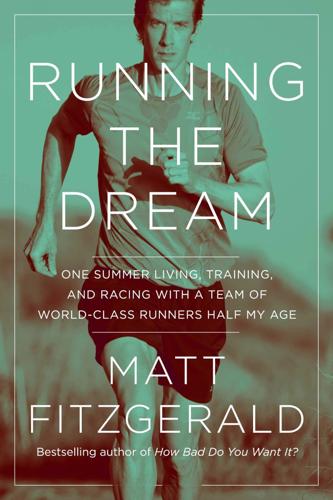
Running the Dream: One Summer Living, Training, and Racing With a Team of World-Class Runners Half My Age
by
Matt Fitzgerald
Published 4 May 2020
“It’s a major inconvenience. But my life goes completely sideways if I don’t get it.” “You’ll probably outlive Methuselah,” I said. “God, I hope not.” We spent the remainder of the session discussing age, aging, and factors that affect longevity. AJ brought up the much-studied but controversial connection between caloric restriction and increased lifespan. I mentioned the less well-known fact that certain personality traits are associated with healthy aging and longevity. “Worriers tend to die young,” I said, “which bodes well for Futsum, but not so much for me. On the other hand, I’ve also read that people with strong passions tend to age well.
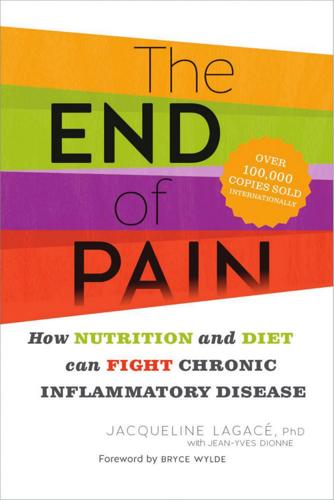
The End of Pain: How Nutrition and Diet Can Fight Chronic Inflammatory Disease
by
Jacqueline Lagace
Published 7 Mar 2014
Crandall et al., “Inflammatory mediators are induced by dietary glycotoxins, a major risk factor for diabetic angiopathy,” Proc Natl Acad Sci usa, vol. 99, 2002, p. 15596–601; M. Peppa, J. Uribarri, W. Cai et al., “Glycoxidation and inflammation in renal failure patients,” Am J Kidney Dis, vol. 43, 2004, p. 690–95. 169. R. Weindruch, “The retardation of aging by caloric restriction: Studies in rodents and primates,” Toxicol Pathol, vol. 24, 1996, p. 742–45; J. Couzin, “Low-calorie diets may slow monkeys’ aging,” Science, vol. 282, 1998, p. 1018. 170. H. Vlassara, “Advanced glycation in health and disease: Role of the modern environment,” Ann ny Acad. Sci., vol. 1043, 2005, p. 452–60; W.
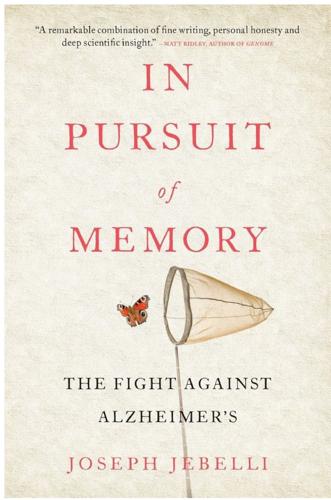
In Pursuit of Memory: The Fight Against Alzheimer's
by
Joseph Jebelli
Published 30 Oct 2017
T., Ganguli, M., ‘Blood pressure and cognitive impairment in India and the United States: a cross-national epidemiological study’, Archives of Neurology, 60 (8), 2003, 1123–8 Pandav, R., Fillenbaum, G., Ratcliff, G., Dodge, H., Ganguli, M., ‘Sensitivity and specificity of cognitive and functional screening instruments for dementia: the Indo-US Cross-National Dementia Epidemiology Study’, Journal of the America Geriatric Society, 50 (3), 2002, 554–61 Pandav, R., Mehta, A., Belle, S. H., Martin, D. E., Chandra, V., Dodge, H. H., Ganguli, M., ‘Data management and quality assurance for an international project: the Indo-US Cross-National Dementia Epidemiology Study’, International Journal of Geriatric Psychiatry, 17 (6), 2002, 510–18 Park, H. W., ‘Longevity, aging, and caloric restriction: Clive Maine McCay and the construction of a multidisciplinary research program’, Historical Studies in the Natural Sciences, 40 (1), 2010, 79–124 Paul, S. M., and Reddy, K., ‘Young blood rejuvenates old brains’, Nature Medicine, 20 (6), 2014, 582–3 Perlmutter, D., Grain Brain: The Surprising Truth about Wheat, Carbs, and Sugar–Your Brain’s Silent Killers, Yellow Kite, 2014 Perry, E.
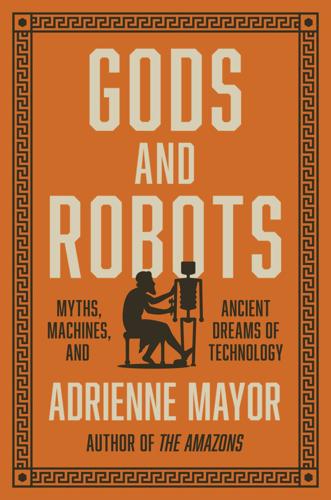
Gods and Robots: Myths, Machines, and Ancient Dreams of Technology
by
Adrienne Mayor
Published 27 Nov 2018
Aristotle’s scientific theories about aging concluded that senescence is controlled by reproduction, regeneration, and diet. The philosopher noted that sterile or continent creatures live longer than those that drain energy in sexual activity. Perhaps it is no surprise that modern life-extension researchers also focus on nutrition and caloric restriction. And Aristotle would be gratified to learn that there is indeed an evolutionary trade-off between longevity and reproduction, and that long-term modern studies suggest that sexual abstinence can add years to individuals’ life spans.24 In all the iterations of the Tithonus myth, ancient and modern, the final image of the once-vital singer is one of lost dignity.

Growth: From Microorganisms to Megacities
by
Vaclav Smil
Published 23 Sep 2019
These conclusions would be disputed by those who point to experiments to rejuvenate human cells by extending telomeres, nucleotide sequences at the ends of a chromosome whose deterioration progresses with age, by reactivating telomerase (Jaskelioff et al. 2011) or by pursuing a life-expanding strategy of caloric restriction. But the former has been shown (as so many other great claims) only in laboratory mice, and the latter is easily conducted and very effective with laboratory invertebrates but ineffective with primates (Mattison et al. 2012) and it would be very difficult to maintain for a lifetime in humans.
…
PLoS ONE 2(11):e1220. doi:10.1371/journal.pone.0001220. Mathews, T. J., and B. E. Hamilton. 2014. First births to older women continue to rise. NCHS Data Brief 152:1–8. Matthies, A. L. 1992. Medieval treadwheels: Artists’ views of building construction. Technology and Culture 33:510–547. Mattison, J. A., et al. 2012. Impact of caloric restriction on health and survival in rhesus monkeys: The NIA study. Nature 489:318–321. Maxwell, J. C. 1865. A dynamical theory of the electromagnetic field. Philosophical Transactions of the Royal Society London 155:495–512. Maxwell, J. C. 1873. A Treatise on Electricity and Magnetism. Oxford: Clarendon Press.
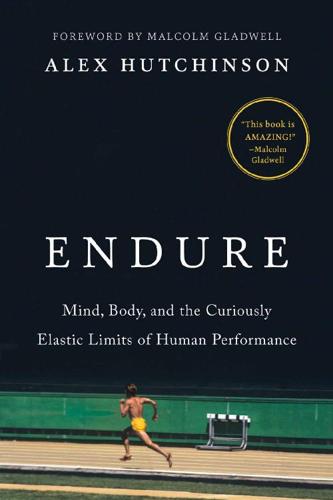
Endure: Mind, Body, and the Curiously Elastic Limits of Human Performance
by
Alex Hutchinson
Published 6 Feb 2018
Du Bois, “Prolonged Meat Diets with a Study of Kidney Function and Ketosis,” Journal of Biological Chemistry 87 (1930): 651–68. 21. published in 1945 in the journal War Medicine: R. M. Kark, “Defects of Pemmican as an Emergency Ration for Infantry Troops,” June 1945, quotation from a summary in Nutrition Reviews, October 1945. 22. Stephen Phinney pointed out in 1983: S. D. Phinney et al., “The Human Metabolic Response to Chronic Ketosis Without Caloric Restriction: Preservation of Submaximal Exercise Capability with Reduced Carbohydrate Oxidation,” Metabolism 32, no. 8 (1983). 23. takes around 3,000 calories: Rapoport, “Metabolic Factors.” 24. at least 30,000: Jeff Volek et al., “Rethinking Fat as a Fuel for Endurance Exercise,” European Journal of Sport Science 15, no. 1 (2014). 25. a definitive 2005 study at the University of Cape Town: L.

Gene Eating: The Science of Obesity and the Truth About Dieting
by
Giles Yeo
Published 3 Jun 2019
A question many people ask is whether there is an optimal weight per month’ to lose, to maximise your chances of keeping the weight off. The truth is, there is no good data available to conclusively answer this question. However, losing a large amount of weight in a short period of time will clearly require extreme caloric restriction, which, while achievable in the short term, is very unlikely, for most people, to be maintained over a period of months and years. Common sense tells us that a more moderate reduction of calories will be easier to maintain over a longer period of time. The most important message to take away from this chapter is that the ‘right diet’ for you is one that works for you and suits your lifestyle, otherwise you are not going to be able to keep it up.
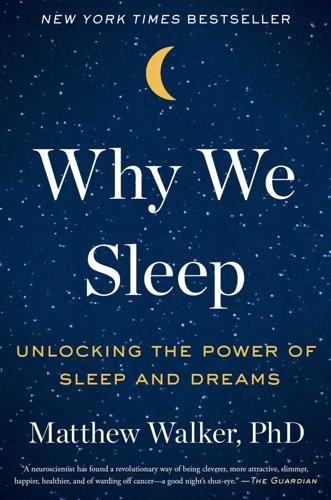
Why We Sleep: Unlocking the Power of Sleep and Dreams
by
Matthew Walker
Published 2 Oct 2017
Should this occur too close to bedtime, it can be difficult to drop your core temperature sufficiently to initiate sleep due to the exercise-driven increase in metabolic rate. Best to get your workout in at least two to three hours before turning the bedside light out (none LED-powered, I trust). When it comes to diet, there is limited research investigating how the foods you eat, and the pattern of eating, impact your sleep at night. Severe caloric restriction, such as reducing food intake to just 800 calories a day for one month, makes it harder to fall asleep normally, and decreases the amount of deep NREM sleep at night. What you eat also appears to have some impact on your nighttime sleep. Eating a high-carbohydrate, low-fat diet for two days decreases the amount of deep NREM sleep at night, but increases the amount of REM sleep dreaming, relative to a two-day diet low in carbohydrates and high in fat.
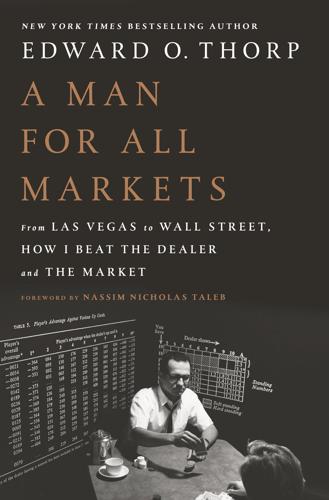
A Man for All Markets
by
Edward O. Thorp
Published 15 Nov 2016
The next year they found a wheel at the Palace Club in Las Vegas on which they made $30,000. They took a year off and sailed the Caribbean, then went on to distinguished careers in science. Among many accomplishments, Hibbs became director of space science for Caltech’s Jet Propulsion Laboratory, and Walford became a UCLA medical researcher who showed that caloric restriction in mice could more than double their maximum life span. Hibbs later wrote, “I wanted to conquer space, and my roommate, Roy Walford, decided that he would conquer death.” Feynman must have known about biased wheels when he told me there was no way to beat the game, because Hibbs got his PhD in physics under Feynman at Caltech the previous year.
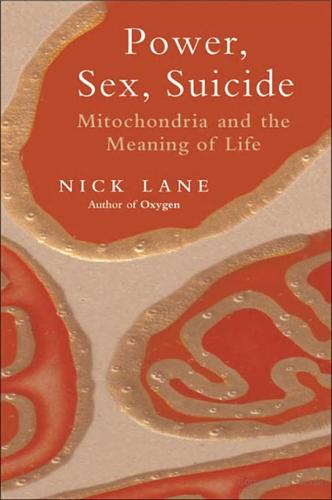
Power, Sex, Suicide: Mitochondria and the Meaning of Life
by
Nick Lane
Published 14 Oct 2005
ADP-regulation of mitochondrial free-radical production is different with complex I- or complex II-linked substrates: Implications for the exercise paradox and brain hypermetabolism. Journal of Bioenergetics and Biomembranes 29: 241–249; 1997. Calorie restriction and free-radical leakage Gredilla, R., Barja, G., and López-Torres, M. Effect of short-term caloric restriction on 346 Further Reading H2O2 production and oxidative DNA damage in rat liver mitochondria and location of the free radical source. Journal of Bioenergetics and Biomembranes 33: 279–287; 2001. Sex versus survival Kirkwood, T. B., and Rose, M. R. Evolution of senescence: Late survival sacrificed for reproduction.

The Food Revolution: How Your Diet Can Help Save Your Life and Our World
by
John Robbins
Published 14 Sep 2010
Promise people they can eat whatever they want, tell their this is a new and amazing revolution, promise them that it won't take any effort, tell them the results will be nearly instantaneous, and make sure they think that everybody else is doing it. Who could resist such hype? If only it were true. In actuality, the primary mechanisms by which the Atkins diet causes weight loss are caloric restriction and ketosis. Ketosis occurs when there is an imbalance in fat metabolism, such as occurs in diabetes or starvation. In ketosis, the body begins to metabolize muscle tissue instead of fat. Authors of these diets advocate "taking advantage" of ketosis to lose weight. Dr. Atkins bases his entire program on ketosis.

Grand Transitions: How the Modern World Was Made
by
Vaclav Smil
Published 2 Mar 2021
Journal of Climate and Applied Meteorology 22:474–487. Matthews, E. et al. 2000. Pilot Analysis of Global Ecosystems. Washington, DC: World Resources Institute. Matthews, R.C.O. et al. 1982. British Economic Growth, 1856–1973. Oxford: Oxford University Press. Mattison, J.A. et al. 2012. Impact of caloric restriction on health and survival in rhesus monkeys: The NIA study. Nature 489:318–321. Maurer, J.M. et al. 2019. Acceleration of ice loss across Himalayas over the past 40 years. Science Advances 2019 5: eaav7266 Mazda. 2018. Skyactiv-X. http://www2.mazda.com/en/next-generation/technology/ McCalley, B. 1994.

2312
by
Kim Stanley Robinson
Published 22 May 2012
As different cells lose telomeres at different rates, drug treatments have to be tagged to certain kinds of cells only, and inadvertent cancers biogerontology, humbled time and again by unexpected the famous calorie-restricted vitamin-enhanced diet acted to feminize gene expression in many ways that proved decisive for the longevity effect, so now gender hormone therapy is tailored to create this feminizing effect without the necessity of the caloric restriction, which never caught on if you recall the old comparison of the human body to a Havana Chevolet, with all moving parts replaced when they broke, then the problem could be compared to metal fatigue in the chassis and axles. In other words, the “seven deadly sins” of senescence are not the only sins.
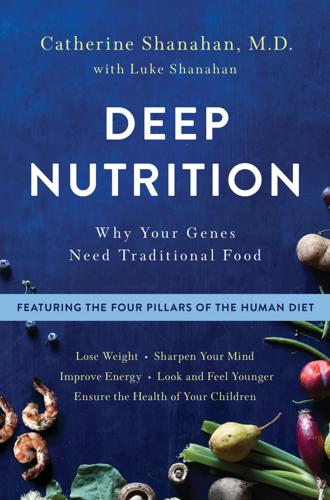
Deep Nutrition: Why Your Genes Need Traditional Food
by
Catherine Shanahan M. D.
Published 2 Jan 2017
British explorers to these parts claimed to have encountered a rarified land where cancer did not exist, where nobody needed glasses, and where it was commonplace to live beyond a hundred. If these accounts were true, then such people would present Western medicine with a mystery. What was their secret? Pure air? Mineral-rich glacial water? Caloric restriction? True or not, enterprising businessmen soon discovered that the word Himalayan was bona fide magic—at least when it was printed on the tonic water bottles they were selling. Amid this circus of conjecture, capitalism, and hucksterism, one extraordinary dentist from Cleveland, Ohio, was determined to inject some much-needed science.

Tools of Titans: The Tactics, Routines, and Habits of Billionaires, Icons, and World-Class Performers
by
Timothy Ferriss
Published 6 Dec 2016
In fact, the 1-hour insulin response may be the most important metabolic indicator of your propensity to hyperinsulinemia and insulin resistance, even in the presence of normal ‘traditional’ markers such as HbA1C.” IGF-1 (Insulin-like Growth Factor-1): “This is a pretty strong driver of cancer. Diet choices (e.g., ketogenic diet, caloric restriction, intermittent fasting) can help keep IGF-1 levels low, if such a strategy is warranted.” Ketosis Warning Signs “Keto works well for many people, but it’s not ideal for all. It’s also not clear why some people do well for long periods of time, while others seem to derive max benefit from cycling.